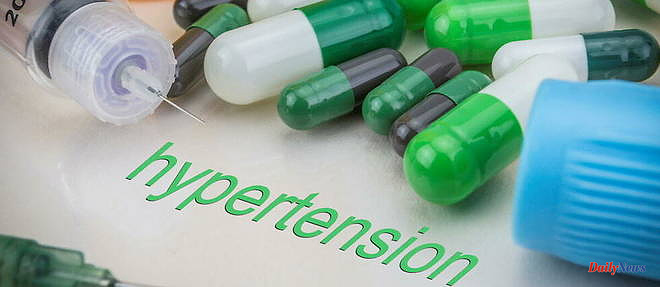In France, more than 10 million people suffer from chronic diseases – cancer, diabetes, AIDS… For the patients concerned, we must learn to treat themselves and to live with the disease. This learning is not easy, because it very often involves having to adopt a new way of life, diets and behaviors: taking treatment, constantly monitoring oneself, carrying out regular medical check-ups, etc.
This medical self-management is essential for their health... However, even in patients trained through therapeutic patient education (TPE) type programs, non-compliance is high since it concerns 30 to 50% of people. The WHO, in 2003, had thus estimated that "optimizing medication adherence would have a greater impact in terms of global health than the development of new drugs".
Why this difficulty in following medical recommendations? Work from neuroeconomics helps to better understand this massive phenomenon – which is difficult to quantify because it is protean. Behavioral economics, by integrating the cognitive, psychological and neural dimension, has shown that man is not a perfect rational supercomputer... On the contrary, many cognitive, emotional and social biases influence his decisions, including those affecting his health and well-being.
Taken in levels of constraints of various natures, we do not always make the most beneficial decisions for us. There is a permanent gap between the intention – the will to do something, like not eating a cake – and the action actually performed – eating the cake. For decision-making that must be maintained over time – the monitoring of treatment, for example – the question is all the more complex.
According to neuroscientist Antonio Rangel, decision-making is based on five points: the creation of the representation of a situation, the evaluation of actions, their selection, the evaluation of results and secondary learning - related to the difference between the projected result and the one obtained. Neuroeconomics also shows that conscious decisions are generally "weighted" by the consequences of our actions. This weighting only applies to certain types of decisions:
requiring an investment (of time, money, effort, etc.);
involving other people (collaboration, sharing…);
implementing an immediate or deferred action: where it is necessary to prioritize actions, to postpone others, to eliminate some of them.
To decide is therefore also to assign a "value" that is both objective and rational but also subjective, and therefore an order to the options available. This notion is central… but complex. The value depends indeed on the risks associated with the decision, on the temporality but also on social aspects, the context, the stress, the fatigue, etc. Understanding how it is allocated is therefore fundamental.
a so-called Pavlovian process, which corresponds to the conditioned association between a stimulus and an action - for example turning on the television at mealtimes - as described by the Russian physiologist Ivan Pavlov. The attribution of response here is conditioned on exposure to a situation;
a process of habit formation: value is assigned based on trial-and-error learning in a given context, and acquired with repetition – taking your treatment with your breakfast;
a process directed by an objective, with projection of the consequences. An action – watching television – can be evaluated through the attribution of benefits and costs – good evening, fatigue from a sports session. This process makes it possible, unlike the other two, to adapt to changes in the context, but it requires a cognitive effort.
Depending on the evaluation mode selected, the decision taken differs – for long-term treatment, as for any other choice. Especially since some elements can compete.
Treatment monitoring is at the heart of a vast "mental puzzle", as endocrinologist and diabetes specialist Gérard Reach describes it. Because the value associated with the therapy also varies under the influence of our beliefs, our environment, etc.
Several factors can thus influence compliance: environmental - social support -, pathological - characteristics of the disease -, related to the treatment and the health system - available care resources, etc. – and personal, including:
cognitive: related to the level of knowledge, information and understanding of the usefulness of recommendations and therapies. Representations, beliefs, customs and culture have a direct impact;
emotional: stress, anxiety, emotional state in relation to the disease, pain or inconvenience caused by treatments are too often neglected;
Behavioral: Habits, personal life organization, skills and know-how could be better used to increase the "value" of treatment - through routine creation, etc. ;
social: living conditions, support from relatives and friends, quality of care are essential.
This situation is not a fatality because the therapeutic education programs (ETP) allow an awareness and an orientation of the patient's objectives. ETP helps to understand that, not being machines, we are subject to many mental processes that can distract us from an act that seems "simple".
If the long-term follow-up of a treatment in patients with all their cognitive faculties is already difficult, certain nerve damage amplifies the problem. Studies show that patients with prefrontal lesions - as a result of stroke, trauma or nerve degeneration... - are unable to be aware of the future consequences of their actions and have difficulty projecting themselves.
The prefrontal cortex houses so-called "executive" functions essential for planning actions, remembering them, and inhibiting distractions or competing actions. They are also necessary for the control of thought and emotions.
Rehabilitation makes it possible to consider new processes to help patients take their treatment – automation, for example. In this case, the primary intention behind an action – taking a drug – may have disappeared in favor of the automatism put in place. These automatic or routine acts have the advantage of requiring only modest cognitive control.
More broadly, in the context of chronic diseases, and even without the prefrontal cortex being affected, a lower competence in executive functions affects all aspects of behavior, including self-care.
Correlations have thus been established between the level of performance of executive functions and patient compliance with therapy. For example, several studies have shown this in young diabetic patients aged 12 to 18, with regard to their glycemic control. Self-regulation capacities related to flexibility, attention control, goal setting and emotion regulation would be significantly associated with therapeutic compliance.












